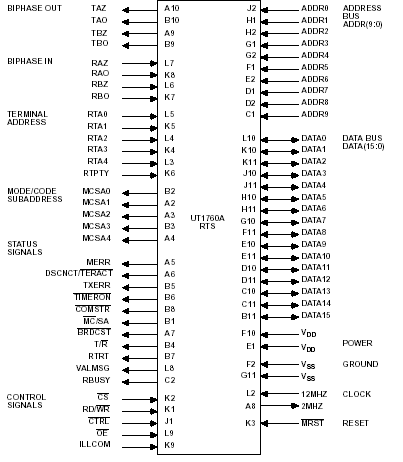UTI760A: Features: `Complete MIL-STD-1760A Notice I through III remote terminal interface`1K x 16 of on-chip static RAM for message data, completely accessible to host`Self-test capability, including continu...
floor Price/Ceiling Price
- Part Number:
- UTI760A
- Supply Ability:
- 5000
Price Break
- Qty
- 1~5000
- Unit Price
- Negotiable
- Processing time
- 15 Days
SeekIC Buyer Protection PLUS - newly updated for 2013!
- Escrow Protection.
- Guaranteed refunds.
- Secure payments.
- Learn more >>
Month Sales
268 Transactions
Payment Methods
All payment methods are secure and covered by SeekIC Buyer Protection PLUS.

 UTI760A Data Sheet
UTI760A Data Sheet






